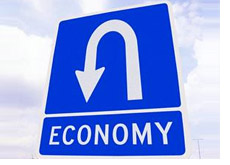Indian businesses learnt to play with Bhutanese economy

For last one year, Bhutanese economy is not performing well, as expected. The government had not expected that increasing trade imbalance with India might create such a trouble. Despite increase in exports of hydropower, Bhutan’s economy has become so fragile that it has to live at the mercy of Indian economy. And of late, the country’s economy is badly hampered by the currency manipulation.
Bhutanese government’s statistics show Bhutanese dependency on India is increasing every year. According the government figures, released early this year, Bhutan imported goods worth Nu 36 million while exported half of that in 2010. This is an increase by almost Nu 8 million compared to the previous year. Latest RMA report says, Bhutan is negative by Nu 15 billion in trade balance with India while current account balance in India has already gone negative. The current account balance with India (stands as negative) dropped from Nu 3 billion in 2009/10 to Nu 13 billion in 2010/11. This comes to be over 18 per cent of the total GDP. The government did not take any measures to improve the negative account balance, which has been one of the primary forces behind rupee crisis.
The situation remains volatile unless imports from India drop. As expected, the hydropower sector is unlikely to balance the bilateral trade though this is expected to grow, with some pundits forecasting nation’s GDP of Nu 65 billion plus in next eight years. However, it takes years during which economy may take any direction.
Rupee crisis is issue of discussion for now. Days before Royal Monetary Authority announced crisis, the government had claimed the country had enough reserve of Rupee for trade. Prime Minister Jigmi Thinley even accused the media of over exaggerating the issue. This is not the first case where the government tried to hide its shortcomings. While it was the reality that Bhutan had been facing shortage of rupee since last year, government made all efforts to keep things under tight grip. This string busted finally. Since the announcement by RMA, the government has not spoken anything about it.
The government has failed to increase rupee borrowings from India at par with imports. With major construction works i.e. hydropower, starting in the country imports have shoot up. The statistics also show that import of daily consumable goods has sharply increased. And most of these imports are from India. By totally focusing on hydropower, as the only source of income for the country, the government ignored possible implications of decreasing food products in the country.
The rupee crisis is more panic to general public than to the government projects. Reports from eastern districts say people are starting to face the consequences. With no domestic agricultural production, Bhutanese have developed dependency on Indian supply. And they are paying now.
In response to RMA’s decision to stop Indian’s from opening accounts in Bhutanese bank and withdraw more than IRs 10,000 from already opened accounts, the Indian businesses challenged. The country situation turned fragile even with few and small businesses across the border towns reacting to the RMA decision by not accepting Bhutanese currency.
Seeking support from the Indian government to resolve the crisis ended in further wait, as if the southern giant is looking for Bhutanese economy to further deteriorate. Though Indian government has asked Bhutan to wait until passes annual budget from the parliament, it is likely to take months before the government takes decision and it is executed.
As a caution, it is advisable that the government stops rein on big Indian companies operating in the Bhutan. Negative response from them would shut the Bhutanese economy. Additionally, they would find it easy point for bargaining in future if they see their inaction can incite volatility of the economy. Avoiding opportunities for Indian economic giants to crush Bhutanese consumer construction market is always favourable for Bhutan.
Primary sector holds key to stabilising economy. The investment policy in Bhutan has ignored this sector. In 2010/11, the primary sector grew by 0.2 per cent while tertiary sector growth was 6.2 per cent.
Bhutanese economy still depends on agriculture. As government prioritises hydropower development, Bhutan has to depend on imports for both equipment for construction and agricultural products. This basically drained Indian currency. Foreign currency earned in the form of dollar could be supplement at this juncture but restriction on tourism as a measure of protect culture chopped off opportunities to earn dollars as well.
This is the first test of Bhutanese economy and proved how fragile it is. Unless balanced growth of all sectors is emphasised, the situation is likely to deteriorate further and dependency on India for all imports would increase. The business community in bordering towns have learnt well this time how can they play with Bhutan to meet their demands. Slightest obstacles from Indian business community will crush the Bhutanese economy. They have seen the playing field.